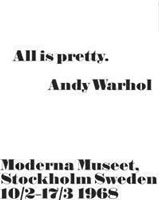"Aleksei Maksimovich
[...] has the ability to feel life. He told me that in our country
labor is beginning to turn into art. He proved it with facts,
examples."
Aleksandr Avdeenko
about Maksim Gorkii, 1934. In: Pervyi vsesoiuznyi s'ezd sovetskikh
pisatelei. Moscow: Sov. pisatel', 1990, p. 243. [Quoted
by Petre M. Petrov: Laying Bare: The Fate of Authorship in
Early Soviet Culture. Ph. D. Dissertation, University of
Pittsburgh, 2006, p. 216.]
The history of art knows no
constancy in the relation between art and reality. There are
periods when the border between art and life is erased. There
are periods when reality enters into competition with art, opposing
itself to the latter as an aesthetic phenomenon. This can lead
to weakness in art; this can lead to strength in reality." [p.
12]
Both the fact itself and its
perception acquire a character of unusual depth and beauty. [...]
And all of this, by raising our thoughts and emotions to the
heights of art, transforms life itself into an artistic production.
This grandiose artistic production is built up out of individual
productions: new construction projects, collective farms, scientific
laboratories, stratosphere balloons, new people and new feelings.
[p. 13]
Our literature cannot and
should not be taken in tow by reality. [...] If 'the engineers
of souls' do not want to risk being turned into simple copyists,
they must begin to compete with reality. They must divine in
it what does not yet exist but what will be there – and
by doing this they must become equal to it. [...] What
can be more exalted for a writer of a Soviet country than creative
work, prompting socialist reality with its ideal forms in lively
images; what can be more exalted than the role of explorer and
guide into our great era!
Veniamin Goffensheffer: "Sorevnovanie
s deistvitel'nost'iu" ("Competition with reality").
In: O sovetskoi literature. Kriticheskie stat'i. Moscow,
1936.
Among the most important postulates
of our aesthetics must be a postulate on the poetry and romanticism
of our actual socialist reality. [...] Chernyshevsky's famous
thesis, "beauty is life", can now be reformulated
for us as a postulate stating that beauty is our socialist reality,
our victorious movement toward communism.
Vladimir Ermilov: "Za boevuiu
teoriiu literatury!" ("For a Militant Theory of Literature!") Literaturnaia
Gazeta 74 (15 September 1948).
In our Soviet life, poetry
and romanticism have become reality itself. We have no conflict
between the wondrous and the real, and this is why our artists
seek beauty and romance not outside of public life and affairs,
but within them. [...] Our actual reality itself, in its sober,
matter-of-fact, day-to-day existence, is romantic; it is profoundly
poetic in its internal essence. This is one of the fundamental
principles in defining the essence of socialist realism.
Vladimir Ermilov: "Za boevuiu
teoriiu literatury!" ("For a Militant Theory of Literature!") Literaturnaia
Gazeta 91 (13 November 1948).
The assertion that the beautiful
is our life, does not involve any idyllic fantasies. The beautiful,
from the viewpoint of the aesthetic of Socialist Realism, is
a struggle for a bright future, and for this reason
our aesthetic excludes the idyllic. [...] The concept of the
beautiful in our aesthetic encompasses the struggle for the
beautiful, without which it would turn into Manilovism,
into empty daydreaming, into false romanticism.
Vladimir Ermilov: "Nekotorye
voprosy teorii sotsialisticheskogo realizma" ("Some
questions about the theory of Socialist Realism"). Znamia No.
7 (1951), p. 148.
Source
Evgeny Dobrenko: Political
Economy of Socialist Realism. Yale University Press, 2007.
